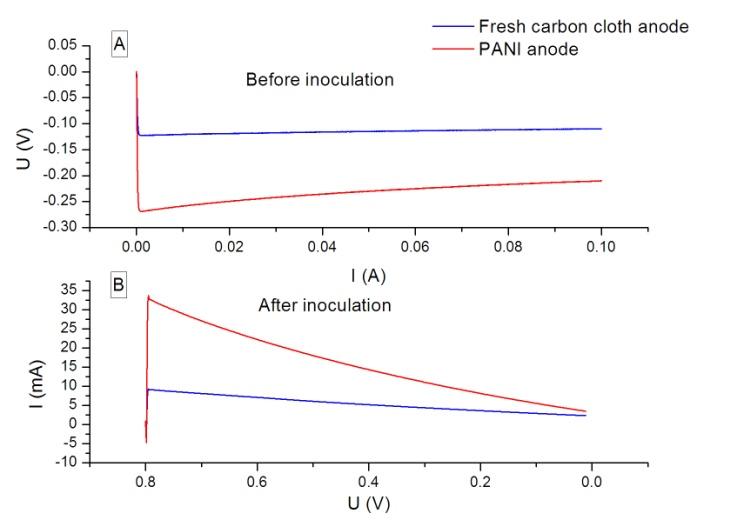Microbial fuel cells (MFCs), known for its ability in converting waste into energy in one step, have drawn much attention in recent years. Due to the great environment-friendly effect, MFCs could produce clean energy, such as electricity and hydrogen, directly from wastewater. For all the applications of MFCs, the basic process, microbes degrading organic matters and releasing electrons to the anode surface, is a bottleneck in MFCs research.
Researchers from theInstitute of Process Engineering (IPE), Chinese Academy of Sciences, reported a new and efficient way to enhance the electrons transfer between microbe and anode. Conductive polyaniline was used to modify the carbon cloth anode, for its low cost and strong covalent interaction with organic function groups.
Because of the instable conductivity of polyaniline in neutral and weak alkaline solutions, which are the operating conditions of MFCs, they demonstrated that the strong covalent interaction of polyaniline and microbe (Figure1) could prevent conductive polyaniline to be de-doped and keep the polyaniline on anode surface of high conductivity. The results from electrochemical analysis (Figure 2) also proved that conductive polyaniline greatly enhanced the electrochemical activities of carbon cloth anode.
Based on these advantages, MFCs with polyaniline modified anode achieved a power density of 2.66 times higher and internal resistance of 65.5% lower than those of the control experiment. Electron transfer between microbe and carbon anode was greatly facilitated by conductive polyaniline modification, which would then improve the industrial applications of MFCs.
This work was supported by the National Natural Science Foundation of China (No.20876160) and the National High Technology Research and Development Program of China (No.2007AA05Z158). The results were published in Biosensors & Bioelectronics.
Contact:
Prof. Li Haoran(hrli@home.ipe.ac.cn)
Institute of Process Engineering, Chinese Academy of Sciences.
(A)  (B)
(B) 
Figure1 ESEM images of carbon cloth anode after inoculation with microbe, (A) control experiment, (B) conductive polyaniline modified anode (image by IPE)

Figure 2 Electrochemical tests figures of the polyaniline anode and fresh carbon cloth anode before and after inoculation (image by IPE)